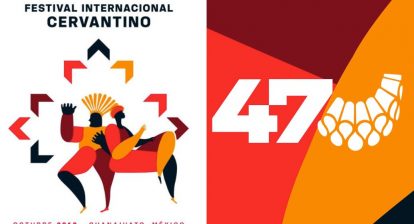January 30, 2018 – In a previous article, we established that the Millennial generation is particularly diverse with regards to social values and immigration, and that Millennials are equally or more culturally active than any previous generation. Millennials also have a few singularities when it comes to motivators, barriers and value perception. Here are key findings from research conducted in Canada and in the United States.
Driven by new experiences and individual benefits
 |
Just like older Canadians, Millennials are choosing to attend arts events for fun or enjoyment (60%) or to spend time with friends and family (24%), according to the Arts and heritage Access and Availability Survey 2016-2017. But younger Canadians also display discovery and experience-seeking traits. 26% of Canadians 18-35 years old say they are attending to learn something new (e.g., something about one’s own heritage or about other cultures). They are also significantly more likely than older Canadians to say they attend a performance to have a new experience/discover new artists/art forms (20% vs 15%).
In the United States, findings about motivations diverge. On the one hand, The Culture Track 2017, an online survey, found no significant generational difference on motivators such as “experiencing new things” and “learning something new.” On the other hand, in Building Millennial Audiences, a report based on research conducted by Wallace Foundation grants recipients, Millennials describe compelling emotional and spiritual benefits. The performing arts help them:
- Feel transcendental – part of something bigger;
- Feel alive and present;
- “Forget” themselves and get away from day-to-day stress;
- Enhance their sense of self or self-identity.
Cost: a real or a perceived barrier?
 |
According to the Building Millennial Audiences report, top barriers that keep Millennials from attending the performing arts are cost, not having people to go with, being busy with other things, and limited awareness and knowledge of the arts organizations.
Cost concerns – the biggest barrier – encompass a number of specific issues. Decisions on whether to spend the money are linked to broader considerations about perception of value, risk: “Will it be worth the money? It’s one thing to pay $50 for a concert of a band you know you or your friends enjoy; it’s quite another to pay $50 for something you are unsure about,” reported one of the interviewees. In addition, Millennials would also be more likely to overestimate the actual ticket price to a given show, compared to older generations.
The report concludes that arts organizations could help attract Millennials by clarifying pricing or by having some satisfaction guarantee policy to mitigate risk.
The Arts and Heritage report however paints a slightly different portrait of barriers for young Canadians. Cost would apparently not represent a greater obstacle for Millennials than for older Canadians. In fact, there is hardly any generational difference in all arts attendance obstacles among the Canadian population.
The top reason reported by Canadian Millennials for not attending the performing arts? “I’m not interested” (reported by 41% of Canadians 18-34 who did not attend in the last 12 months).
As any marketer would know, interesting the uninterested requires considerable investments.
Shifting perceptions, a little less so.
Value perception is key
“Vibe” (what the atmosphere feels like), “buzz” (a feeling of excitement and fun) and “fit” (whether an event feels right for someone like me) are also key decision factors, according to Building Millennial Audiences. Millennials like events that offer a “complete” experience, with food and drinks, opportunities to socialize and the right space. Buzz-worthiness – and social shareability – also enhances value perception and is a significant part of the wholesome experience.
Shareability was also found to be the second most important appeal of digital cultural experiences in Culture Track 2017 (for all generations). Live, in-the-flesh, arts experience may not be readily shareable over social media (especially when venue policies require smart phones to be turned off). However, the digitization of the performing arts, notably through the use of Linked Open Data, may soon enrich the “analog” experience with layers of rich digital information that could, for example, be appended in the form knowledge cards within social shares.
In terms of reach, we must bear in mind that word of mouth and social media, along with email, are the main sources of information about live performances for Millennials. Consequently, arts organizations and artists’ agents and managers should consider loosening up their “no smart phone” policy.
Tips
Here’s a series of advices, from research reports and from Millennials who accepted to comment on this post:
- Unless you are a Millennial, don’t do it yourself. Millenials are particularly wired for innovation, concluded a recent Canadian study. So, task a Millennial within your staff to design and run programming for Millennials. Or involve Millennials in your volunteer program.
- Visual or media arts exhibitions or installations in conjunction with a performance may enrich the experience and tap into particular Millennial’s interests beyond the performing arts. Similarly, presenting a performance in a museum or in an art gallery could be a good way to reach out to the Millennial cultural omnivore.
- Be clear about pricing and incentives for different age groups. This may help clear up misperceptions about pricing and affordability.
- Clearly communicate the emotional and spiritual benefits of the arts that are of value to Millennials.
- Some arts performances are about topics that relate to the progressive social values held by many Millennials. Communicating these connections may be another way to attract young audiences.
- Focus on “buzz-worthiness.” Younger audiences are attracted to experiences others will like and share on social media.
- Email marketing is still a good way to reach Millennial audiences, and it enables you to send distinct messages to different segments of your audience. Make sure to take advantage of it as you implement the tips above.
- Be smart-phone friendly. If you still have one, loosen up your “no smart phone” policy during performances. Offer complementary wifi. And offer ways for patrons to charge their phones.
References
Environics Research, Arts and heritage Access and Availability Survey 2016-2017, prepared for Canadiand Heritage and Canada Council for the Arts, 2017.
LaPlaca Cohen, Culture Track 2017, 2017.
Wallace Foundation, Building Millennial Audiences: Barriers and Opportunities, 2017.
Inga Petri and Frédéric Julien, Digitizing the Performing Arts: An Assessment of Opportunities, Issues and Challenges, prepared for CAPACOA, 2017.
WoflBrown and Capacity Interactive, Performing Arts Ticket Buyer Media Usage Study, 2017.
Ilona Dougherty and Amelia Clarke, “Wired for Innovation: Valuing the unique innovation abilities of emerging adults”, Emerging Adulthood, 2018.
Frédéric Julien
Director of Research and Development
CAPACOA
Recent and Related News
Attendance Trends: Captivating Millennial Audiences (part 1)




